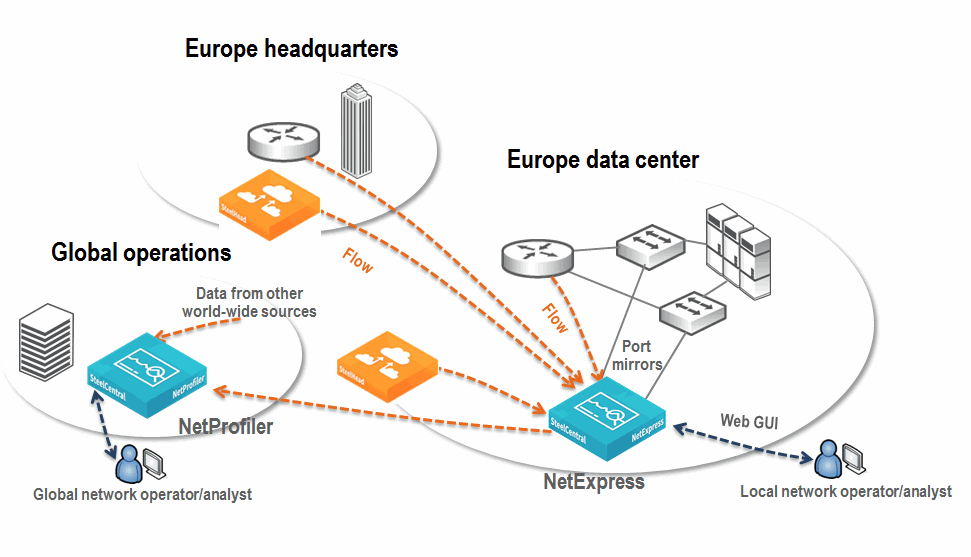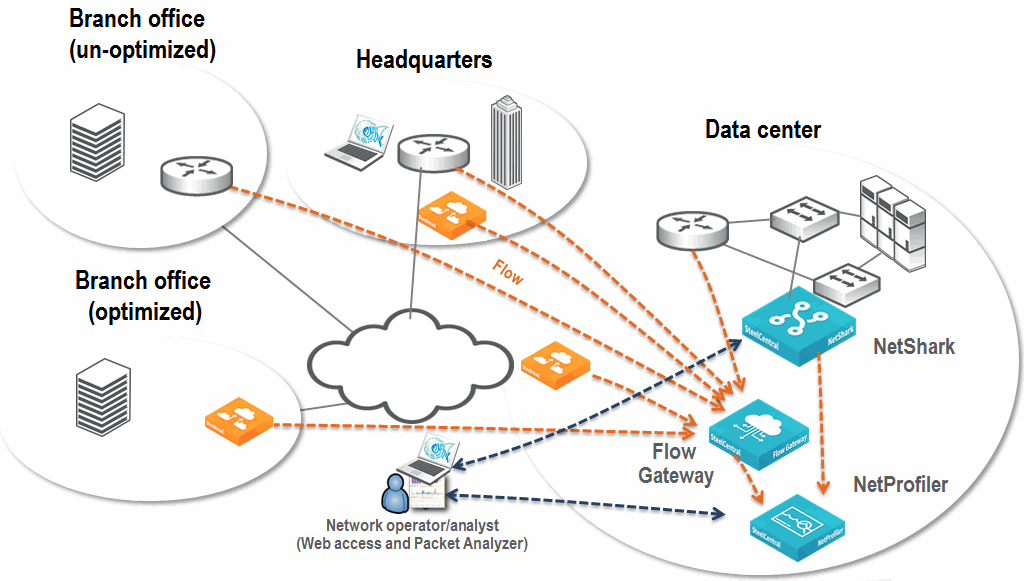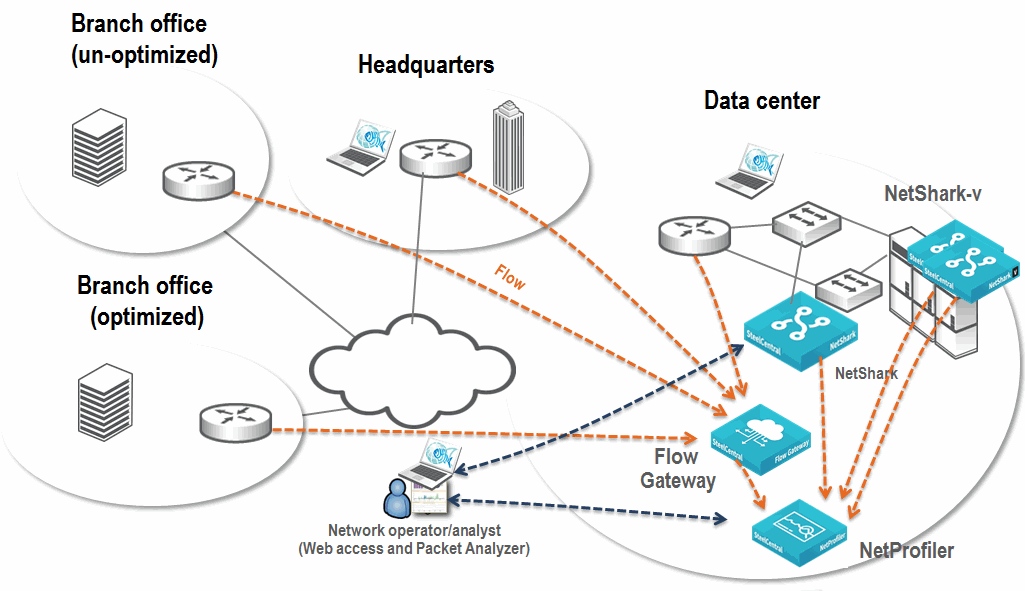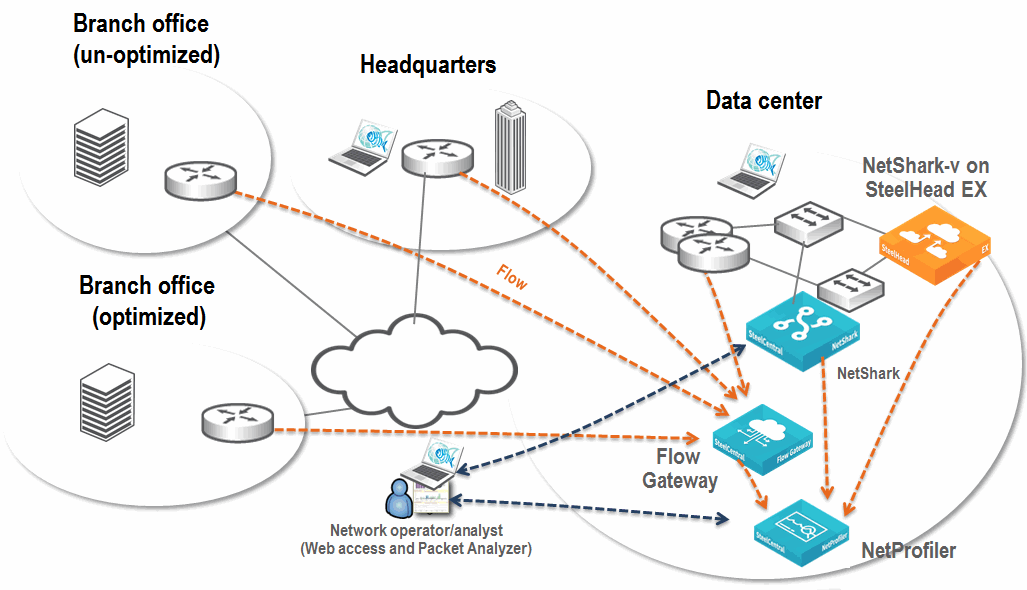Figure 2‑1 shows an example NetShark (any variation) and Packet Analyzer deployment. Although this example shows only a single NetShark appliance, you might need additional NetShark appliances for large data centers or to monitor additional locations.
Figure 2‑1. Example NetShark and Packet Analyzer Deployment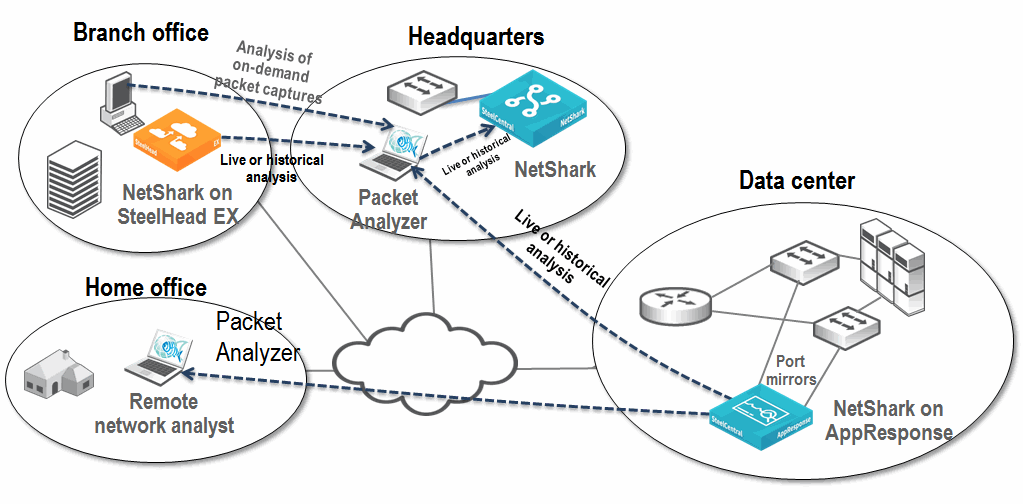

When you install the NetShark in the data center, you do not always catch all traffic. However, this uncaptured traffic is often not of great interest or significant volume: for example, local print traffic to a floor or building. If you want to monitor traffic that does not go through the data center, you can place additional NetSharks at strategic wiring closets or deployed in the branch office on the SteelHead EX. Because there are many NetShark sizes, you can choose one solution that is appropriate for the data center and a smaller NetShark for a remote wiring closet if appropriate. The availability of the NetShark-v enables you to leverage the power of NetShark in conjunction with an existing VMware ESXi, or Microsoft Hyper-V, or SteelHead EX VSP environment and extend visibility into parts of your network that were not previously practical. For available NetShark models, see Choosing a NetShark Model.
For more details about watches, see the SteelCentral Packet Analyzer Reference Manual.
Figure 2‑2 shows an example of a standalone NetExpress deployment. Flow is collected locally at the data center from routers and SteelHeads, and additional flow is collected from remote sites. There is port mirroring of traffic for critical applications, sent directly to the NetExpress monitoring ports.
Figure 2‑2. Example Standalone NetExpress Deployment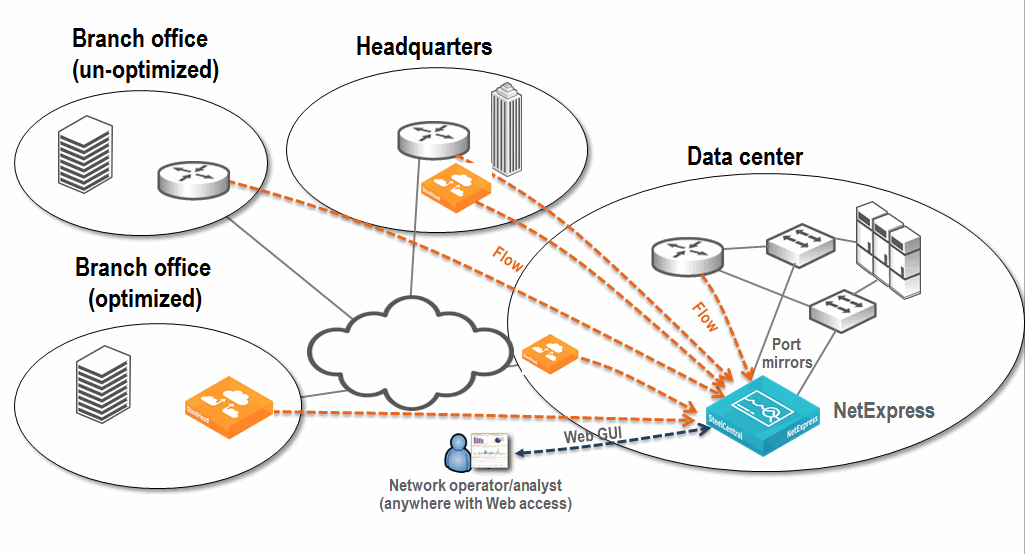

Figure 2‑3 shows the NetExpress as part of a larger deployment that includes a Standard NetProfiler. This example shows that the local network operator monitors all traffic on the NetExpress and can configure local policies and local service dashboards. The data received by the NetExpress is also sent to a global NetProfiler. Collection from other sources by the global NetProfiler is not shown.
Figure 2‑4 shows an example deployment that includes the NetProfiler and Flow Gateway. All SteelHeads and routers at remote sites, and routers within the data center, send flow data. There are no data flows from smaller sites (not shown in Figure 2‑4). Because these much smaller sites primarily communicate back to the data center, traffic detection is based upon collection from the data center routers and SteelHead.
Figure 2‑4. Example NetProfiler and Flow Gateway Deployment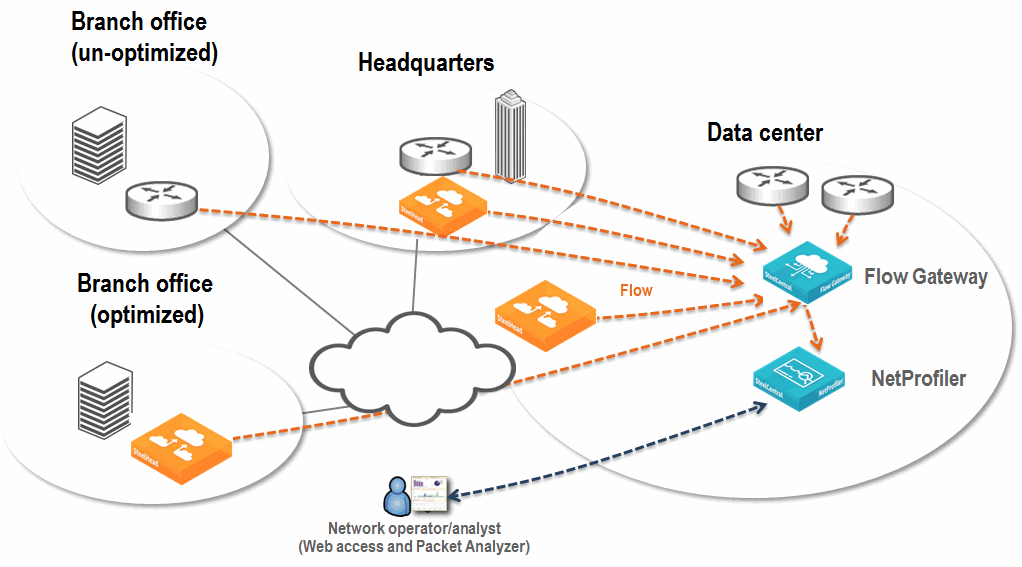

Figure 2‑5 shows a Flow Gateway collecting and deduplicating the data flow, then forwarding the flow to the Enterprise NetProfiler. Because this deployment does not require network performance and deep packet analysis, you do not need to install the NetShark. This solution enables you to report, analyze, and troubleshoot traffic across the entire large enterprise network.
You must decide what information you want to monitor before you decide where to place the NetShark. If you have a single data center and the traffic to and from that data center is the most critical, you should place the NetShark so it can monitor the critical links or VLANs in the data center. However, if your servers contain critical data and are located in a special area (outside the traditional corporate data center), then you might want to place the NetShark in this area. For more information about various methods of collecting packet data, see Packet Collection for SteelCentral.
Figure 2‑6 shows an example deployment that includes a NetProfiler, Flow Gateway, a NetShark, and Packet Analyzer. Routers and SteelHeads send flow data across the network to the Flow Gateway and provide wide visibility into the network. A NetShark sits off of switches in the data center and collects packets for deeper visibility. Flow data from the NetShark merges with all other flow data collected by the NetProfiler. You can log in to the NetProfiler to view applications flowing across the entire network. When troubleshooting, if you need deeper packet-level analysis, the NetProfiler Management Console automatically launches Packet Analyzer. This configuration takes you from the NetProfiler view of flow data directly into Packet Analyzer views of packet data.
This deployment expands upon the NetProfiler deployment described in Deploying the NetProfiler, Flow Gateway, NetShark, and Packet Analyzer. When you add an AppResponse with a NetShark to the deployment, you gain a number of benefits. These include:
This deployment expands upon the NetProfiler deployment described in Deploying the NetProfiler, Flow Gateway, NetShark, and Packet Analyzer. By adding the NetShark-v, you add visibility into the physical network, and you have visibility into the relationship between virtual machines hosted on an ESXi platform in the virtual environment.
Figure 2‑8 shows an example deployment that includes the NetProfiler, Flow Gateway, NetShark, NetShark-v, and Packet Analyzer. Deploy the NetShark-v on each ESXi platform in which you want visibility. Metrics are sent from within the virtual environment to the NetProfiler. Using Packet Analyzer, you can also perform packet analysis.
This deployment expands upon the NetProfiler deployment described in Deploying the NetProfiler, Flow Gateway, NetShark, and Packet Analyzer. When deploying the NetShark on the SteelHead EX as part of an overall deployment, you might want to deploy the NetShark-v if any of the following conditions are true:
